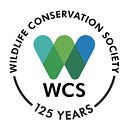WCS 3-Sentence Science
A Bigger Umbrella for Wildlife
November 22, 2019
Each year, Wildlife Conservation Society scientists publish more than 300 peer-reviewed studies and papers. “WCS 3-Sentence Science” is a regular tip-sheet — in bite sized helpings — of some of this published work.
Here we present work by WCS’s James Watson on the conservation of so-called “umbrella species.”
- Researchers developed a problem‐based method for prioritizing conservation actions for “umbrella species” — wildlife whose distributions overlap with many other flora and fauna — that maximizes the total number of flora and fauna benefiting from management, while considering threats, actions, and costs.
- They tested it by assessing the performance of the Australian Federal Government’s umbrella prioritization list, and found that the number of species benefitting could be increased from 6 percent to 46 percent for the same budget of AUD550m/year if more suitable umbrella species were chosen.
- Authors argue that nations around the world can markedly improve the selection of prioritized umbrella species for conservation action by taking advantage of this transparent, quantitative, and objective prioritization approach.
Study and Journal: “Use of surrogate species to cost‐effectively prioritize conservation actions” from Conservation Biology
WCS Co-Author(s): James Watson, Director, Science and Research Initiative
For more information, contact: Stephen Sautner, 718–220–3682, ssautner@wcs.org.
